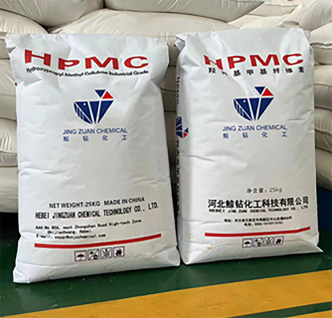
Ліст . 06, 2024 08:55 Back to list
Hydroxy Methyl Propyl Cellulose Applications and Benefits in Various Industries
Hydroxy Methyl Propyl Cellulose A Versatile Polymer in Modern Applications
Hydroxy Methyl Propyl Cellulose (HMPC) is a non-ionic, water-soluble cellulose ether that has been gaining significant attention in various industries due to its unique properties and versatility. Derived from natural cellulose, HMPC belongs to a family of cellulose derivatives that have undergone chemical modification to enhance their functional characteristics. Its ability to dissolve in water and form viscous solutions makes it an invaluable component in a wide array of applications, ranging from pharmaceuticals to construction materials.
Chemical Structure and Properties
The chemical structure of HMPC consists of a linear backbone of glucose units, with hydroxy groups and propyl ether groups attached at specific locations. This modification imparts improved solubility and modifies the rheological properties of the polymer, making it suitable for various viscosity requirements. HMPC is characterized by its non-ionic nature, making it compatible with a broad range of other chemical substances, which allows for easy formulation in diverse applications.
One of the most notable properties of HMPC is its ability to form gels and films. These films are often used as coatings due to their excellent barrier properties, which protect sensitive materials from moisture and oxygen. Additionally, HMPC solutions exhibit pseudoplastic behavior, meaning they can flow easily under shear stress, making them ideal for applications that require easy application and spreading.
Applications in Pharmaceuticals
In the pharmaceutical industry, HMPC plays a critical role as a binder and thickening agent in the formulation of tablets. Its ability to enhance the viscosity of formulations ensures that active pharmaceutical ingredients (APIs) are evenly distributed, which can lead to improved bioavailability and therapeutic efficacy. Furthermore, HMPC is often used in topical formulations, where its moisture-retaining properties help improve skin hydration and overall product performance.
The film-forming capability of HMPC has also enabled its use in developing controlled-release drug delivery systems. By forming a barrier around the drug, HMPC can moderate the release rate of the active ingredients, enhancing treatment outcomes while minimizing side effects.
hydroxy methyl propyl cellulose

Use in Food Products
In the food industry, HMPC is utilized as a thickener, emulsifier, and stabilizer. It is commonly found in a variety of processed foods, ranging from sauces and dressings to ice creams and baked goods. Its ability to improve texture and maintain the desired consistency makes it an attractive option for food manufacturers looking to enhance product quality without compromising on flavor or safety.
HMPC is also recognized for its emulsifying properties, which can stabilize oil-water mixtures—a crucial function in many food applications. Importantly, it is considered safe for consumption and is often included in formulations for gluten-free products, where it helps mimic the texture typically provided by gluten.
Impact on Construction Materials
The construction industry has also embraced HMPC for its valuable properties. In cement and mortar applications, HMPC functions as a water-retaining agent, allowing for extended working times during applications while reducing the risk of cracking. Furthermore, its ability to improve adhesion and workability enhances the durability and performance of construction materials, making it a critical component in modern building practices.
Conclusion
In summary, Hydroxy Methyl Propyl Cellulose is a multifunctional polymer that serves a vital role across several sectors, including pharmaceuticals, food, and construction. Its unique properties, such as water solubility, film-forming abilities, and excellent viscosity characteristics, make it a preferred choice for manufacturers seeking to create high-quality, effective products. As industries continue to evolve and seek sustainable solutions, HMPC stands out as a prime example of how natural materials can be harnessed for innovative applications, thereby contributing significantly to advancements in technology and product development.
-
Unlocking the Benefits of HPMC Products: A Gateway to Versatile Applications
NewsAug.07,2025
-
Unleashing the Potential of HPMC Ashland: A Comprehensive Look
NewsAug.07,2025
-
Tile Bonding Cellulose: The Key to Superior Adhesion and Durability
NewsAug.07,2025
-
Hydroxypropyl Methylcellulose Powder: The Versatile Component in Modern Pharmaceuticals
NewsAug.07,2025
-
Hydroxyethyl Cellulose: The Versatile Solution for Various Industries
NewsAug.07,2025
-
Hydroxyethyl Cellulose (HEC): The Versatile Polymer for Various Applications
NewsAug.07,2025







